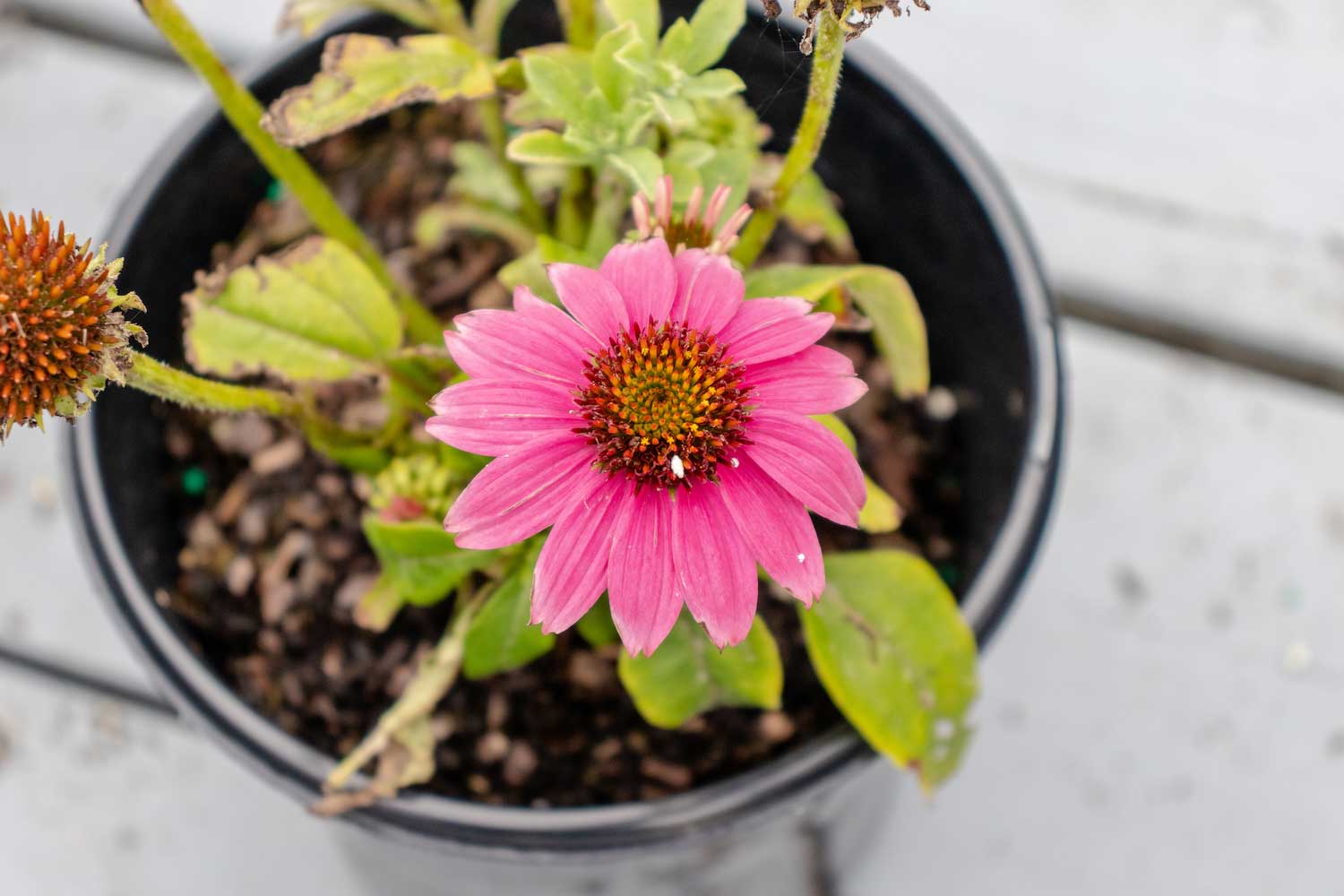No space? No problem. Small spaces still work for native plants

Don't let a small yard — or no yard at all — stop you from going native and adding plants that will help you attract insects, birds and other pollinators to your outdoor space.
You don't have to have a large yard to add native plants and landscaping. In fact, dedicating a small space or even a few pots to native plants is a good way to start so it isn't overwhelming. The North American Native Plant Society even recommends starting with a single plant if you're just trying out your green thumb for the first time!
No matter how much space you have to devote to a native plant garden, before you get started planting make sure to spend some time studying the space so you know how much light it gets throughout the day, the National Audubon Society advises. Some plants require full sun — at least six hours of direct sunlight a day — while others will tolerate or even grow best in shady spots.
RELATED: FIVE REASONS TO PLANT WITH NATIVES
If you have a small garden plot to work with, think vertically rather than horizontally, the National Wildlife Federation advises. Planting densely with tall plants will make an attractive landscape and will also reduce your need for mulch or other ground cover and give weeds less places to take hold.
Another way to include vertical elements in a small area is by adding trellises or lattices along a wall or fence and planting vines that will grow upward. Native vines are often overlooked by gardeners, but there are many options that will help attract pollinators and other creatures looking for nectar and pollen.
If you don't have a yard to work with, consider planting native plants in pots instead. When planting natives in containers, look for tall containers that give plenty of room for roots to grow deeply as they would in the ground, the National Wildlife Federation advises. Your soil or potting mix will also take longer to dry out in deeper pots than shallow ones, which means they will need to be watered less frequently.
If you're doing a native container garden, look for plants that do well in compact or dry soils, because potted plants will dry out more quickly than those planted in the ground, according to the National Wildlife Federation. It's also important to make sure the pots have drainage holes at the bottom. If they don't, you can drill some holes or line the bottom of the pot with small rocks so the roots don't get soggy in standing water.
Just like with gardening in the ground, a vertical strategy works well with containers as well, because you can fit more flowers in to create a more colorful garden area in a small space. And no matter where you're planting, herbs can be another good addition to your native garden. In addition to the visual interest they add, herbs also provide nectar and pollen for pollinators, the wildlife federation reports. Plus some insects use herbs as their host plant. Host plants are those plants that insects live on and/or off of for survival. For example, black swallowtail butterflies use dill and parsley as their host plants.
Whether you're adding a native container garden to your patio or installing a small garden plot filled with natives, there are many plants to choose from. The National Audubon Society maintains a Native Plant Database, which is searchable by ZIP code. From the list specific to your ZIP code, you will find all the trees, shrubs, vines, grasses, succulents, annuals and perennials native to your area, including a listing of the best results for your locale.
Once you've got your plants planted, don't forget to add a water source for all the creatures who will visit, the National Wildlife Federation advises. A small birdbath will do the trick, and you can make it more hospitable for insect visitors by placing large rocks or stones inside to serve as perches or landing pads. If you have a muddy spot in your yard that you can let puddle after it rains, you may find butterflies visiting because they like to drink muddy water for the nutrients it provides.
